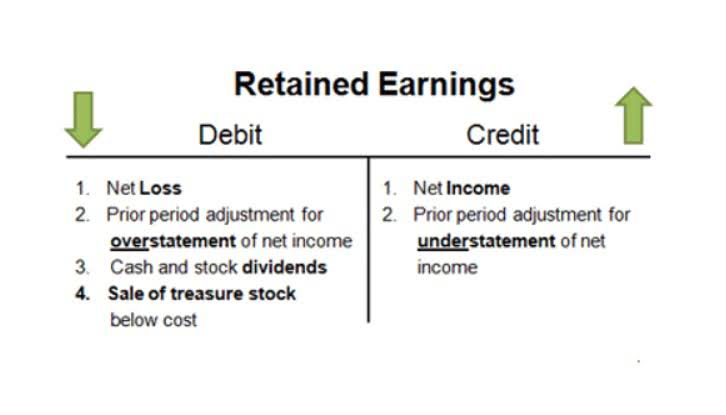Market Value of Equity: Definition and How to Calculate

Here, we’ll assume $25,000 in new equity was raised from issuing 1,000 shares at $25.00 per share, but at a par value of $1.00. In recent years, more companies have been increasingly inclined to participate in share buyback programs, rather than issuing dividends. The excess value paid by the purchaser of the shares above the par value can be found in the “Additional Paid-In Capital (APIC)” line item.
- As of September 30, 2023 (the date listed on the company’s 2023 annual report), the company had an accumulated deficit of $214 million.
- The diluted share count figures we’re using throughout the exercise are deliberately not fully adjusted for dilutive securities, for illustrative purposes.
- For example, a ratio like return on equity (ROE), which is a company’s net income divided by its shareholder equity, is used to measure how well a company’s management is using its equity from investors to generate profits.
- The shareholders’ equity number is a company’s total assets minus its total liabilities.
Everything You Need To Master Financial Modeling
Common stockholders will get the residual equity left after all creditors and preferred stockholders have been paid. Preferred stockholders get priority before the common shareholders get paid for any residual equity. The equity of a company is the net difference between a company’s total assets and its total liabilities.
What Are Some Other Terms Used to Describe Equity?
If this figure is negative, it may indicate an oncoming bankruptcy for that business, particularly if there exists a large debt liability as well. The two metrics, equity value and enterprise value, are the two most common methods to measure the valuation of a company. The equity value is the fair market value (FMV) of a company’s common equity at present.
What Is Included in Stockholders’ Equity?
- Both liabilities and shareholders’ equity represent how the assets of a company are financed.
- They represent returns on total stockholders’ equity reinvested back into the company.
- However, the issuance price of equity typically exceeds the par value, often by a substantial margin.
- The equity value is the total market value of a company’s common equity from the perspective of its shareholders, as of the latest closing date of the markets.
- Equity can also refer to other items like brand equity or other non-financial concepts.
- Douglass High School in Austin has only 35 students this year, but is getting 10 additional staff positions.
They include investments; property, plant, and equipment (PPE), and intangibles such as patents. Current assets include cash and anything that can be converted to cash within a year, such as accounts receivable and inventory. If the company ever needs to be liquidated, SE is the amount of money that would be returned to these owners after all other debts are satisfied. Shareholder equity represents the total amount of capital in a company that is directly linked to its owners. From the perspective of an investor or an investment analyst, it is important to understand the concept of equity because it predominantly used to evaluate the real value of a company (net worth).
On the other hand, an investor might feel comfortable buying shares in a relatively weak business as long as the price they pay is sufficiently low relative to its equity. Equity, as we have seen, has various meanings but usually represents ownership in an asset or a company, such as stockholders owning equity in a company. ROE is a financial metric that measures how much profit is generated from a company’s shareholder equity. Adding up all the assets and https://www.bookstime.com/articles/process-costing liabilities and getting the difference will determine the value of the total equity or the book value of the company during that particular time period in the balance sheet. Unlike public corporations, private companies do not need to report financials nor disclose financial statements. Nevertheless, the owners and private shareholders in such a company can still compute the firm’s equity position using the same formula and method as with a public one.
Typical Debt-To-Equity (D/E) Ratios for the Real Estate Sector – Investopedia
Typical Debt-To-Equity (D/E) Ratios for the Real Estate Sector.
Posted: Sat, 16 Sep 2023 07:00:00 GMT [source]
How Do Stock Buybacks Impact Shareholders Equity?

It is calculated by subtracting the value of all the liabilities from all the assets owned by the company. It is also called shareholders’ equity in corporate total equity formula settings with this definition. It is the book value of the company or its net worth if all liabilities to creditors are paid after liquidating all its assets.


Investors often use ROCE instead of the standard ROE when judging the longevity of a company. Generally speaking, both are more useful indicators for capital-intensive businesses, such as utilities or manufacturing. In general, there are three different levels of market capitalization, and each level has its own profile. Companies with a market capitalization of less than $2 billion are considered small capitalization, or small caps.
Accounting Equation Formula and Calculation
For private entities, the market mechanism does not exist, so other valuation forms must be done to estimate value. As part of its 2023 annual report, Apple reported $73.812 billion of shareholder equity. Of the 50.4 million shares authorized, the company had issued roughly 15.5 million shares. Many view stockholders’ equity as representing a company’s net assets—its net value, so to speak, would be the amount shareholders would receive if the company liquidated all of its assets and repaid all of its debts.
